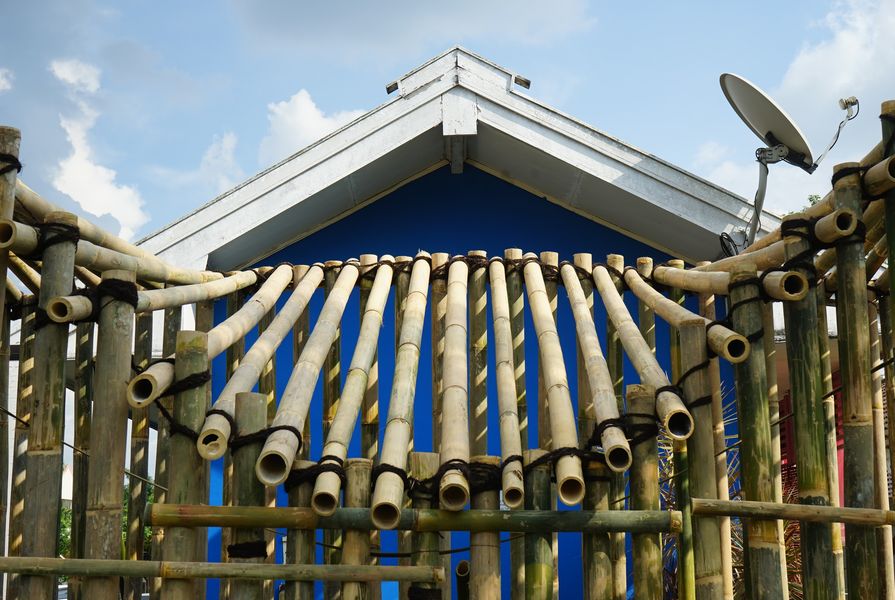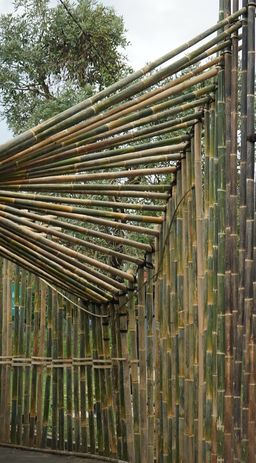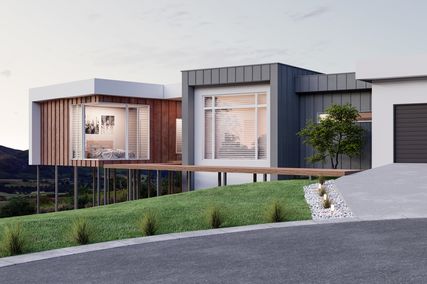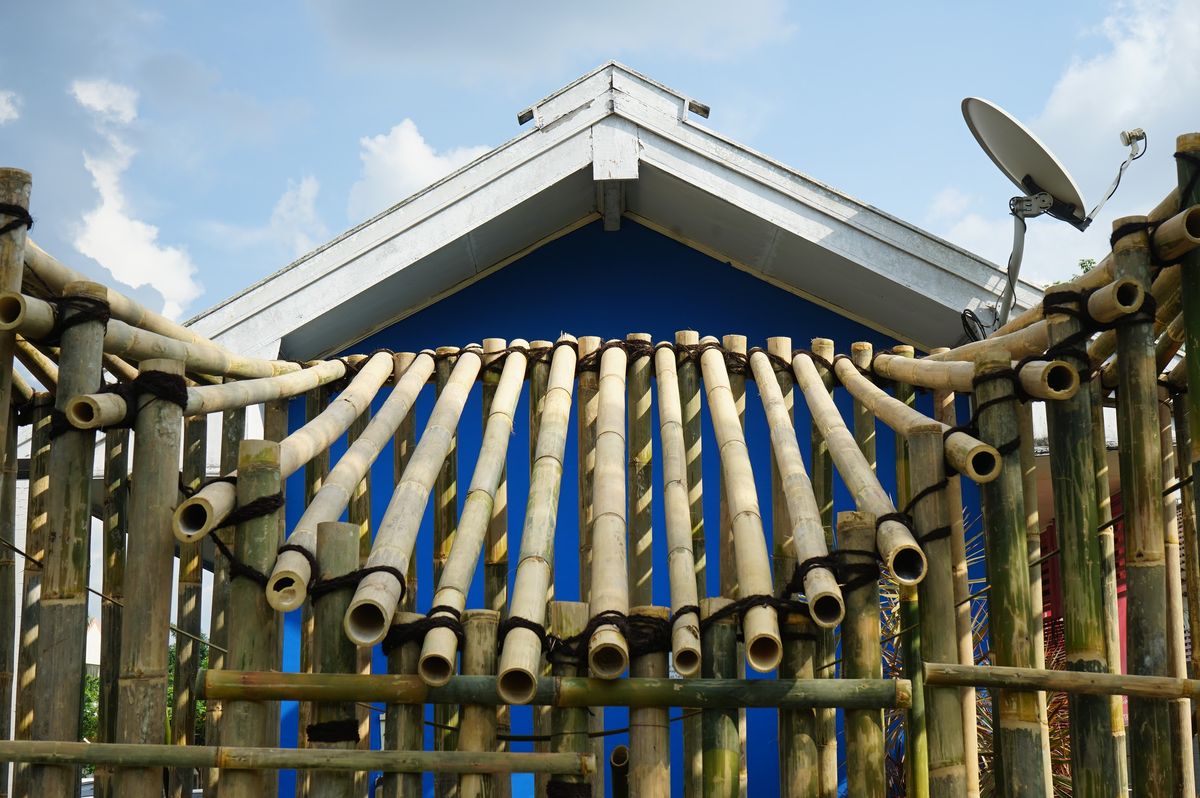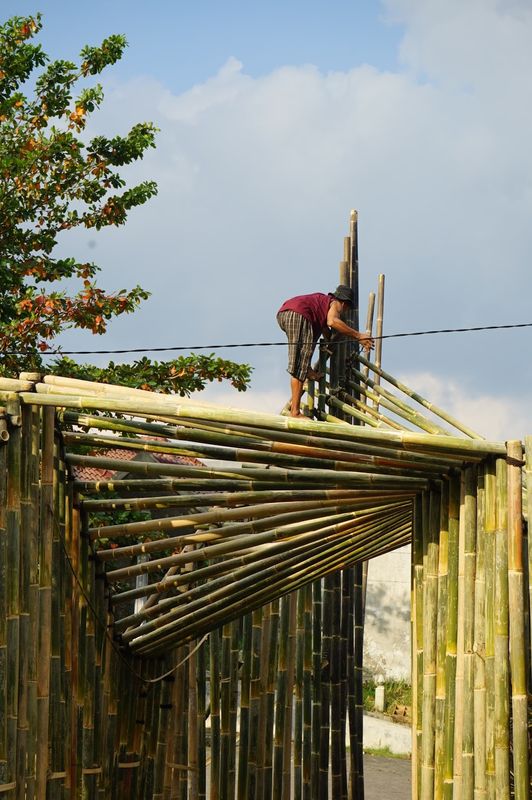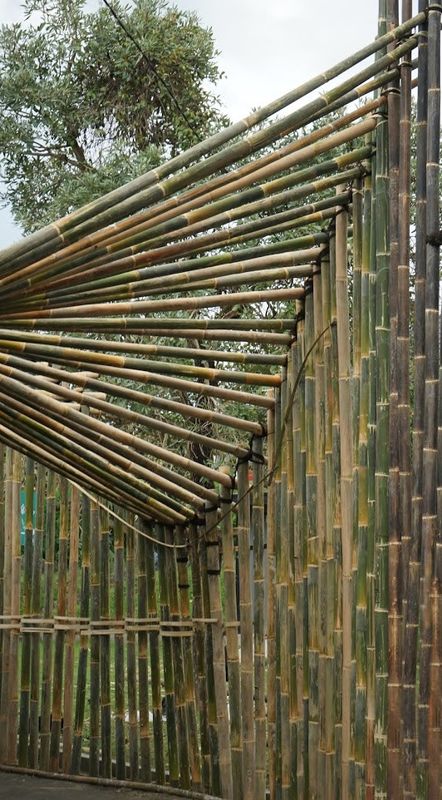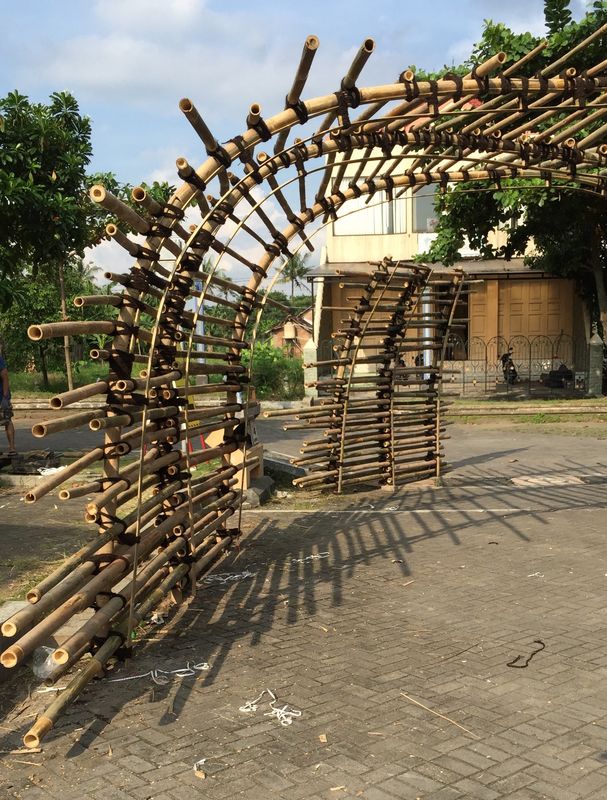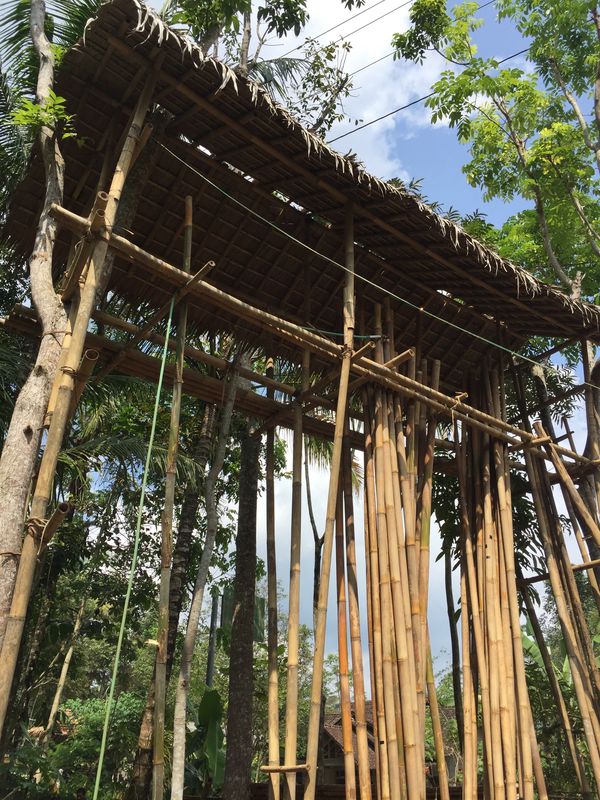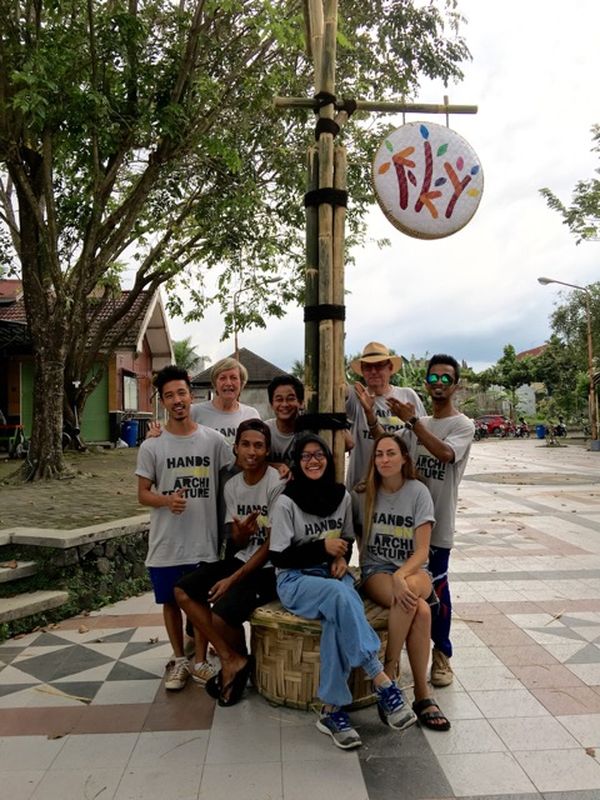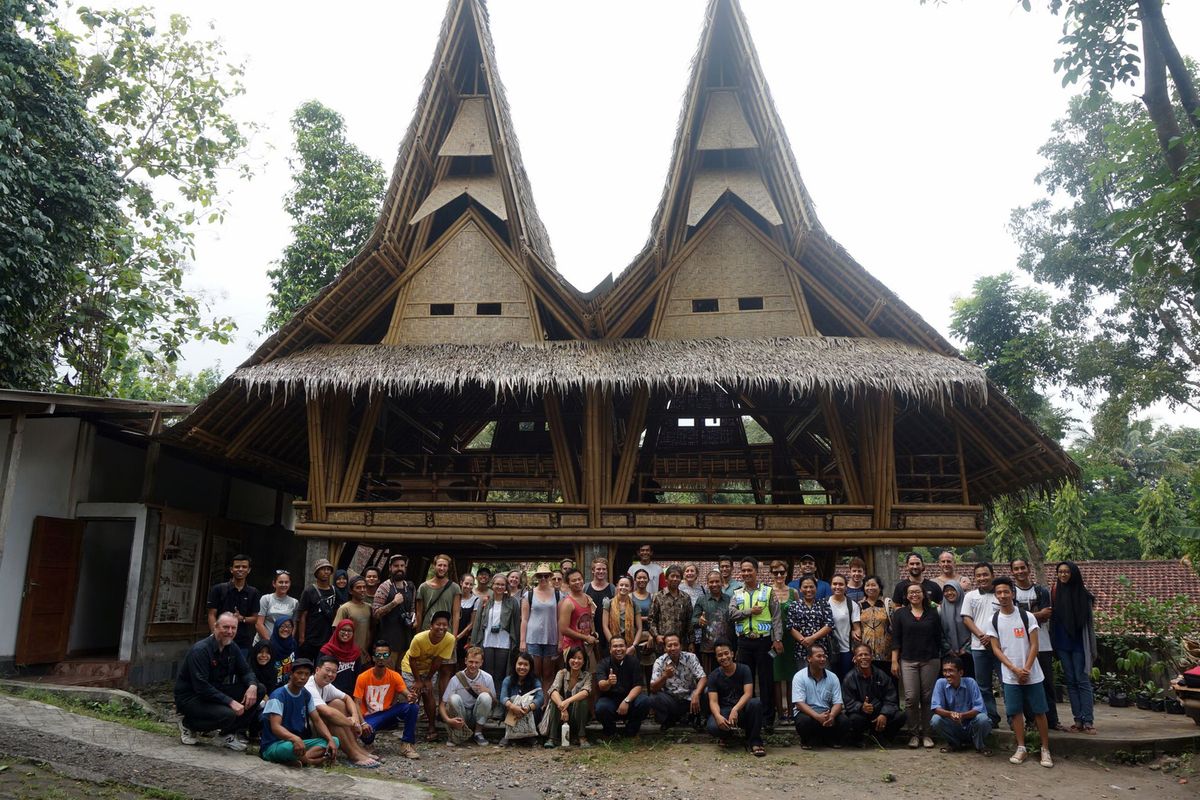The AusIndoArch Hands On Architecture student workshop is part of a collaborative project coordinated by Andrea Nield and Yohana Raharjo. The design and build workshop involved two Australian universities and two Indonesian universities, with support from the Northern Territory Government, Charles Darwin University Foundation, architecture firms BVN and Savage Architecture and Archinesia magazine. It is the second collaboration of this nature, following the first event hosted by the NT Chapter of the Australian Institute of Architects in Darwin in 2014. (Read more about the 2014 AusIndoArch: Tropfest conference, which followed the student workshop, here.)
This most recent workshop took place in the Javanese city of Yogyakarta from14–24 July 2016 and brought together 18 Australian students (from the University of Newcastle, Charles Darwin University and University of Melbourne), 15 Indonesian students (from Universitas Gadjah Mada and Universitas Kristen Duta Wacana) and two German students from Aachen University, all under the guidance of six Indonesian and seven Australian architects.
The format gave the students two days to design a series of temporary bamboo structures for the forthcoming FYI Arts and Music festival in Yogyakarta. They then spent a week on site, physically constructing their designs with the support of Indonesian and Australian architectural mentors and a team of local Javanese craftsmen. Having visited some impressive bamboo structures on the first day, the students were exposed to the creative and technical aspects of bamboo construction and encouraged to explore the nature of the material and its limits. They also planted new bamboo to sustainably replenish the material used during the project.
Project from the design and build AusIndoArch Hands On Architecture student workshop.
Image: Ken Yeh
The intention of the organizers was to also open all the participants’ senses to the sounds, tastes, smells, tactility and mysterious low light of the region, as well as its diverse cultural roots and layers of custom. After dinner each evening, lectures were given by the architect mentors, by torchlight on the banks of the river, to initiate a cross-cultural discourse with the students about architecture, materials and craft. This was tempered by and interspersed with local musicians performing with traditional handmade wooden and bamboo instruments.
Each of the five projects undertaken by the students had different qualities and constraints, as students explored conceptual issues of connecting, splitting, curving, lighting and preserving bamboo, as well as physically learning to cut, shape and join the material, assisted by local craftsmen. One of the distinguishing features of the projects was the diversity of ways of thinking about and using bamboo, as each group developed its own unique relationship to the material and its site.
The important educational and architectural aspects of this collaboration notwithstanding, the lasting legacy of the AusIndoArch project has been to initiate an important cross-cultural collaboration between Australia and Indonesia, and to foster lasting friendships and networks between students, architects and educators. The projects embody this cross-cultural dynamic and are evidence of the value of these modes of working. It is important to continue this rich collaboration and experimentation.
Note: Michael Chapman was one of the seven Australian mentors leading the Hands On Architecture workshop. The other Australian mentors were Joanna Best, Brendan Meney, Ken Yeh, Nici Long, Dave Hodgkin and Lawrence Nield. The Indonesian mentors were Lintang Rembulan, Yoshi Fajar, Yohana Raharjo, Aryanto Sudjarwo, Medy Krisnany-Samedyastoety and Eko Prawoto.

